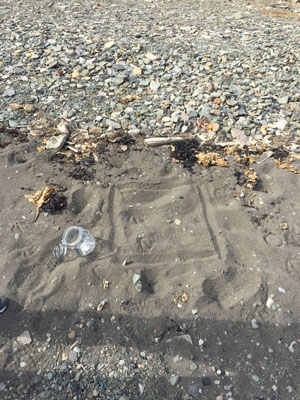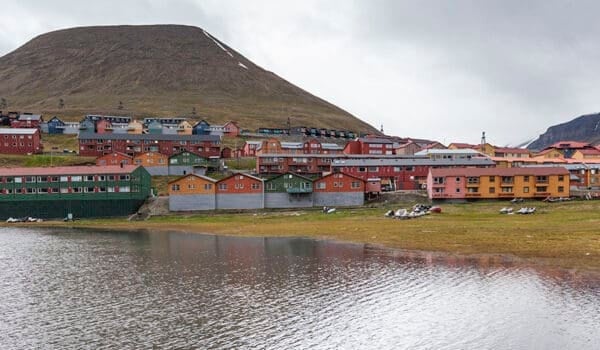From the NILU Annual Report 2016: The fact that plastic waste pollutes the oceans is well known and has attracted a lot of media attention both in Norway and internationally. The visible plastic waste is what most people notice – but most of the plastic in the sea cannot be seen by the naked eye.

Plastic particles of 5 mm or less are called microplastics. Some of the microplastics in the ocean come from larger plastic objects and plastic waste that has been broken down by sun, sea and mechanical processes, but some also come from clothes.
Where is the plastic?
– Clothes made of synthetic textiles emit large quantities of microplastics when we wash them, says senior scientist Dorte Herzke of NILU’s Environmental Chemistry department in Tromsø, – and these microscopic plastic fibres end up in the sea when the washing machine drains.
Once the microplastics have reached open waters, scientists find it again everywhere – in birds, in sediments and in the ocean as far north as Svalbard. It was at Svalbard that Herzke, together with Jan H. Sundet and Maria Jenssen from the Institute of Marine Research, conducted a study on microplastics in the seawater along the Svalbard coast. The study received financial support from Svalbard’s environmental protection fund in 2015 and 2016, with the main purpose to investigate whether there are differences in the amount of plastic particles in the Adventfjord water (where Longyearbyen is located) compared to the inhabited Isfjorden and uninhabited Breibogen.
– The reason we want to find out if there are microplastics in the ocean is because of the negative impact it may have on fish and other organisms that ingest it, explains Herzke. – The animals fill up their stomachs and intestines with plastic that gets stuck, but in addition we know that environmental pollutants can bind to the ingested microplastics. That way, toxic chemicals enter the food chain, but we still know too little about exactly what negative effects this may have.
Floating on the surface
The results from Herzke, Sundet and Jenssen’s study shows that the level of both fibres and microplastic fragments was almost insignificant in all soil sediment samples, and in most of the samples from the shore. In the samples taken above the high water mark, however, significant deposits of microplastics, both fibres and fragments, were recorded. In the pilot study from 2015, the scientists found most of the microplastics and fibres in wastewater from the Longyearbyen water purification plant, which is not equipped to remove all of these particles.
– What we found corresponds to previous studies, which suggest that microplastics originating from drainage in Longyearbyen is essentially lighter than seawater. Thus, it floats near the sea surface, explains Herzke. – Over time, the plastic particles will sink down, due to chemical changes in the plastic and because organisms bind to them and make them heavier. But this process is slow, and in cold Arctic waters it is even slower.
Clean a beach!
The result of the survey is largely positive in the sense that scientists have not been able to detect more microplastics in the seawater in Adventfjorden and Kongsfjorden, where people live permanently, than in uninhabited Breibogen. However, Dorte Herzke emphasizes that a larger survey with several collected samples is needed to establish with certainty that there are no such differences.
She can also tell that they found most of the microplastics on the shore, above the high tide level. The reason for this is most likely that plastic waste is washed up by high waves and spring tide, or carried by the wind. When on the beach, the plastic is broken down into smaller particles, which precipitation then brings down into the sediments. From there it gradually washes out into the sea in the form of microplastics, and is thus exposed to the marine ecosystem.
– We hope this study can contribute to more knowledge about how plastic waste ends up as microplastics in the sea, concludes Herzke. – We also want to emphasize the importance of cleaning beaches, not only in Svalbard, but everywhere. Not only because it looks prettier, but to prevent more trash ending up as a microplastics.


